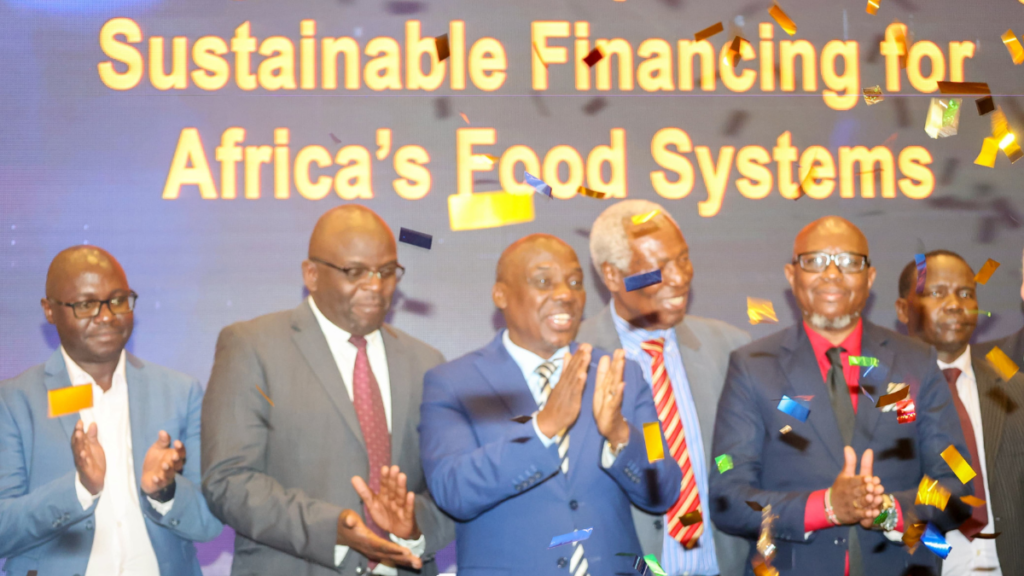Kenya is hemorrhaging over Sh72 billion each year in wasted food, even as millions of its citizens struggle to secure a single meal. The scandal is not just about rotting produce or inefficient supply chains—it is a reflection of a broken food financing system designed to serve investors, donors, and government technocrats more than the farmers who keep this country alive.
The 2021 Food Waste Index Report by the UN Environment Programme paints a damning picture. Each Kenyan discards an average of 99 kilograms of food annually, translating to more than 5.2 million tonnes of food loss across the nation every year. This isn’t simply a tragedy. It is a structural failure of a system that fails to prioritize people over policy.
These statistics formed the backdrop to a media launch held in Nairobi for the upcoming Financing Agri-food Systems Sustainably (FINAS) 2025 Summit scheduled for May. As agriculture experts, financial actors, and development partners gathered to unveil lofty goals for reforming Kenya’s food systems, a familiar question loomed: will this summit bring real change, or is it yet another cycle of development jargon, elite consensus, and photo ops?
Moses Abukari of the International Fund for Agricultural Development (IFAD) addressed the gathering with a sober reminder. In Sub-Saharan Africa, food loss ranges between 120 to 170 kilograms per person annually, with an estimated $4 billion in grain alone being lost. His argument was simple but urgent: these losses represent untapped capital. Rather than burying our wealth in landfill or letting it rot in silos, we must reinvest it in ways that actually transform food systems from the ground up.
Abukari pointed to the findings of the Agriculture and Rural Development Partners Group (ARDPG), which reported that Kenya spends an average of $1.63 billion each year on food systems. While 75 percent of that comes from domestic sources—a strong sign of local commitment—the remaining 25 percent, largely from international development assistance, is shifting. Traditional aid is declining, replaced by philanthropic funding and other “official flows” that may look innovative on paper but often serve elite financial agendas over grassroots transformation.
This shifting trend offers both a challenge and an opportunity. If Kenya is to build a resilient food system that feeds its people, empowers smallholder farmers, and strengthens rural economies, then it must break from traditional donor dependency and reimagine what effective financing looks like. Abukari stressed the need for innovation: not only in agricultural practices, but in how the system is financed—from regenerative farming to public-private partnerships to digital finance tools that reach the most underserved.
But rhetoric alone won’t fix what generations of misaligned priorities have broken. The reality is stark: the financial sector continues to abandon agriculture because of its perceived risks. Freddy Bob-Jones, Managing Director of ACELI Africa, revealed that despite agriculture employing over a third of Kenya’s workforce, it receives a mere 4 to 5 percent of all commercial bank capital. The math tells its own story. Ten-year government bonds yield 14 percent returns, while agricultural loans give banks just 3 percent. In a system driven by profit, feeding a nation has become an unattractive investment.

ACELI Africa is attempting to disrupt this logic. Since its inception, the organization has worked with 45 banks and financial institutions to unlock $293 billion for over 3,000 agri-SMEs across East Africa. Remarkably, more than half of these loans went to first-time borrowers—businesses that, for years, have been locked out of formal finance channels. The impact has been immense, connecting 1.5 million smallholder farmers and workers to real economic opportunity. This proves that when capital is democratized, agriculture thrives.
But these breakthroughs are exceptions, not the rule. Kenya’s food system still relies on a patchwork of subsidies, pilot projects, and goodwill. Dr. Kipronoh Rono, Principal Secretary for Agriculture, confirmed that the government, with support from the German development agency GiZ, is working on a new policy framework to guide sustainable financing and subsidy management in agriculture. Dr. Charity Mutegi, director of the upcoming FINAS Summit, emphasized that this year’s forum will tackle the state’s role in agricultural finance, track investment flows across the continent, and assess progress on the Kampala Declaration on funding commitments.
Yet despite the pledges and working groups, a troubling pattern persists. Policy remains disconnected from reality. The voices of farmers, pastoralists, agro-processors, and informal traders are still drowned out by the noise of policy briefs, strategy sessions, and international development language. In Kenya, agriculture is not just a policy domain—it is a daily struggle, a cultural identity, and for millions, the only economic lifeline. Without re-centering those who live this reality, food system reform will remain performative.
Global institutions like the UN estimate that the world loses $12 trillion every year in social, environmental, and economic costs due to current food system inefficiencies. Africa carries a disproportionate burden of that loss. If the FINAS Summit is to be more than an expensive symposium, it must confront these costs directly. It must shift focus from abstract financial modeling to tangible, community-led financing solutions that empower those most affected by food insecurity.
Africa does not need more summits. It needs courage. It needs to dismantle a financing regime that treats African food systems as high-risk charity cases rather than as investable, vital engines of the continent’s future. The billions already being spent must be redirected—toward innovation, access, resilience, and dignity. Until then, Kenya’s food crisis will remain unsolved, not for lack of ideas, but because the system was never truly built to nourish its people in the first place.







